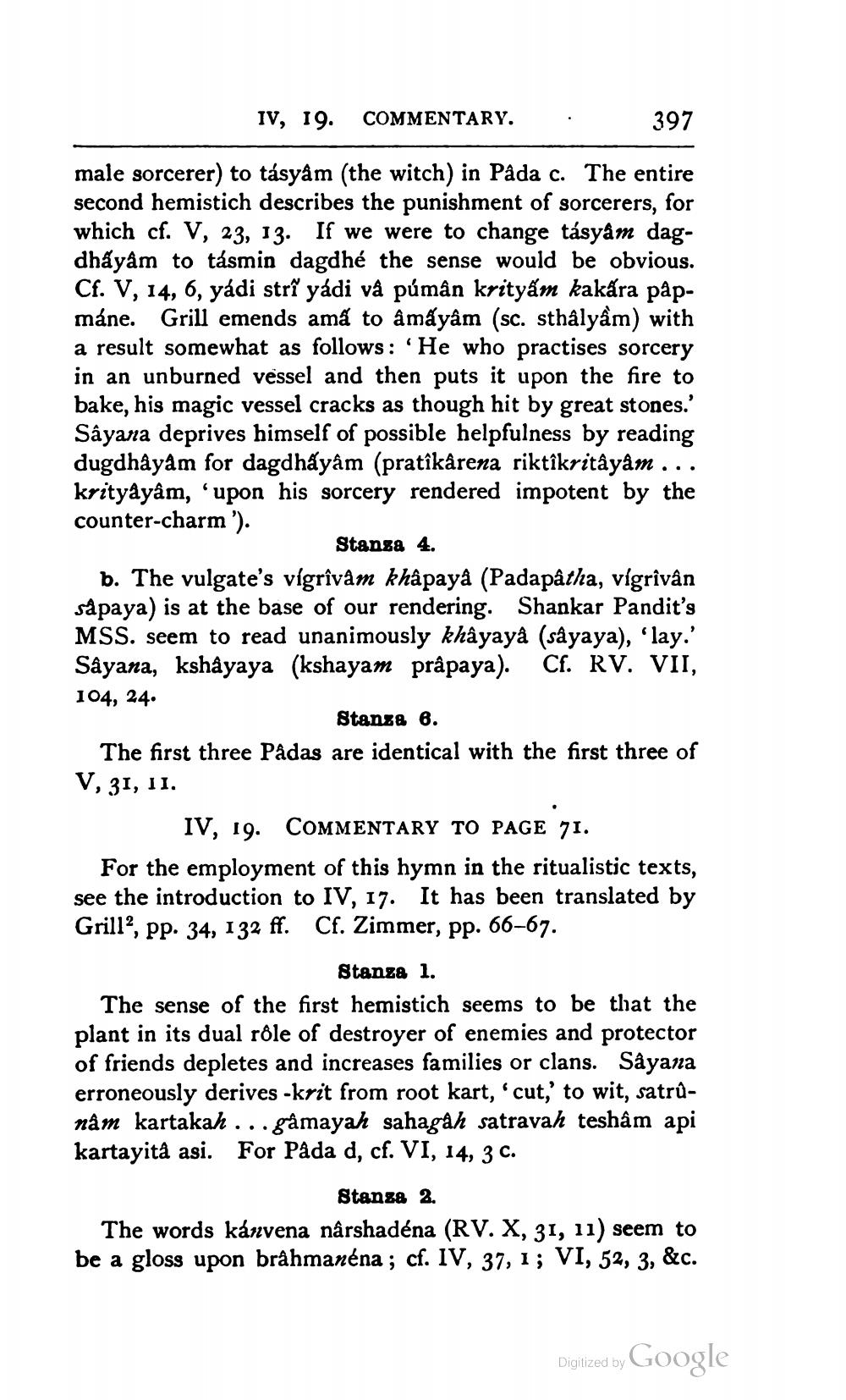________________
IV, 19. COMMENTARY.
:
397
male sorcerer) to tásyâm (the witch) in Pâda c. The entire second hemistich describes the punishment of sorcerers, for which cf. V, 23, 13. If we were to change tásyam dagdhayam to tásmin dagdhé the sense would be obvious. Cf. V, 14, 6, yádi strî yádi vá púmân krityám kakára papmáne. Grill emends amá to âmáyâm (sc. sthâlyầm) with a result somewhat as follows: 'He who practises sorcery in an unburned vessel and then puts it upon the fire to bake, his magic vessel cracks as though hit by great stones.' Sayana deprives himself of possible helpfulness by reading dugdhayam for dagdháyâm (pratîkarena riktîkritâyám ... krityâyâm, upon his sorcery rendered impotent by the counter-charm').
Stansa 4. b. The vulgate's vlgrivam khapaya (Padapatha, vigrivẫn såpaya) is at the base of our rendering. Shankar Pandit's MSS. seem to read unanimously khâyaya (sayaya), 'lay.' Sâyana, kshấyaya (kshayam prâpaya). Cf. RV. VII, 104, 24.
Stansa 6. The first three Pådas are identical with the first three of V, 31, 11.
IV, 19. COMMENTARY TO PAGE 71. For the employment of this hymn in the ritualistic texts, see the introduction to IV, 17. It has been translated by Grill?, pp. 34, 132 ff. Cf. Zimmer, pp. 66–67.
Stanza 1. The sense of the first hemistich seems to be that the plant in its dual rôle of destroyer of enemies and protector of friends depletes and increases families or clans. Sâyana erroneously derives -krit from root kart, 'cut, to wit, satrûnam kartakah ... gåmayah sahagah satravah teshâm api kartayità asi. For Påda d, cf. VI, 14, 3 C.
Stanga 2. The words kánvena nârshadéna (RV. X, 31, 11) seem to be a gloss upon brâhmanéna ; cf. IV, 37, 1; VI, 52, 3, &c.
Digitized by
Digjized by Google




